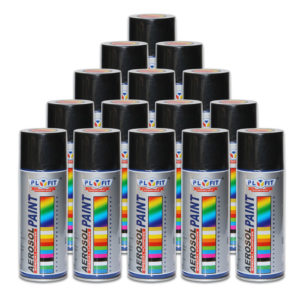How to Get Rid of Mice – Step-By-Step Guide
A field mouse might look cute and cuddly while scurrying through a field, but this is as close as most homeowners should want to get to this pest. When mice get inside the home they can create all types of issues from destroying property up through making the residents in the home ill.
Mice feed on human food sources – they get into cereal boxes, snack foods, bread, pet food and anything else that isn’t in a tightly secured container. They can even get into closed cupboards and cabinets in order to feast on the bagged or boxed foods inside. Cardboard boxes aren’t the only thing that can suffer damage at the paws and teeth of mice – these pests can also damage drywall, dig into insulation and even damage electrical wires inside walls while they are scavenging for food or setting up a nest inside of a home.
Beyond what could be extensive and expensive property damage, mice can also make humans sick. They tend to travel and hunt on countertops, in cabinets and around sinks and their excrement and saliva could potentially contain some serious (even deadly) bacteria or viruses.
Mice breed rapidly and populations can grow very quickly once they have made their way into a home, which greatly increases the possibility for damage and danger to residents. This is why it is critical for homeowners to take the appropriate actions at the first sign of mouse activity inside of their home.
Effective DIY Mouse Prevention
The first thing that a homeowner who has seen mouse activity in their home needs do is identify and eliminate the point of entry. Mice can squeeze through very small openings, often much smaller than a homeowner would expect, so a full inspection of the foundation around the area of mouse activity should be conducted.
Any holes and cracks around the foundation and windows need to be filled to keep mice from getting in and out. Possibly points of entry could include the space around incoming gas and water pipes, the space around incoming electrical wires, any gaps around windows, basement doors or overhead garage doors. The areas around dryer vents, ventilation fans and exhaust fans should also be examined for potential entry points for mice. Thankfully this is a fairly cheap and easy task, even for those who aren’t overly handy. A trip to the home improvement store will provide all the tools necessary – larger holes can be filled in with expanding foam and smaller holes and cracks can be sealed with silicone caulk.
Keeping Clean to Keep Mice Out
After all points of access have been sealed, indoor effort of prevention should be tackled. This begins with proper storage of human and pet foods – all of which should be placed in secure containers with tight lids. The areas where mice were active should also be thoroughly cleaned – countertops, cabinets, floors, etc. should all be swept, mopped and disinfected to remove any remaining evidence of the mice (urine, excrement, etc.) and to remove any crumbs or spills that may have attracted the rodents to begin with.
DIY Mouse Extermination Efforts
There are plenty of options for dealing with mice inside of the home on the shelves of hardware stores and home improvement centers. Some of these methods can be fairly effective, but each can also have negatives that need to be seriously considered prior to use. If a homeowner catches an infestation in its earliest stages – any one of the following can be used in order to eliminate the mice that have entered the home. One of the most widely used methods in the use of mouse traps to capture the mice, either dead or alive.
Snap Traps
The most common method of DIY mouse control is the snap trap, which a homeowner baits and places in an area of mouse activity. This old standby certainly has potential when it comes to eliminating mice one at a time, but it does carry some dangers to residents and pets. If this style trap isn’t placed only where mice can get to it, children, dogs, cats or other pets who come in contact can have fingers, toes, paws, etc. injured.
Glue Traps
This style trap needs to be placed properly or pets can get into them and they don’t necessarily ensure that the mouse trapped will be killed. Some diligent mice will find a way to work themselves out of these traps, even if it means chewing off a limb to do so, which can create and entirely different mess for a homeowner.
Live Traps
Live traps are much better for those who don’t want to have to deal with handling or disposing of a dead or seriously wounded mouse. These traps are baited and placed in an area of known mouse activity and once a mouse is caught, the homeowner simply needs to take the trap somewhere to release the live rodent.
The biggest concern with this type of trap is where the rodent will be set free. If that drop off point isn’t far enough away from the home, the mouse may very well be able to find its way right back in leaving the homeowner to go through the entire process again from square one.
Bait
Poison in the form of baits might seem like a fool proof method of mouse control, but while this can serve as a very effective means for killing off mice entering the home it can also be one of the most dangerous methods of rodent control. Even if the baits are placed in what seems to be a secure location, mice (or other rodents who gain access) can drag portions of it to places where household pets or family members can come in contact with it.
Eliminating an Infestation Safely
Mice are intelligent, fast and they have the ability to multiply at a rapid rate when given the opportunity. While it might be tempting for a homeowner to try and take on a mouse infestation on their own, these pests can be very difficult to get rid of once they have built nests and begun breeding.
The best method of getting rid of mice (or any rodents) after they have entered a home is enlisting the help of a pest control professional. A trained and licensed exterminator has the tools and knowledge to identify all entry points and areas where mice have begun nesting. Pest control technicians also have access to a wider variety of highly effective control methods which they can implement in ways that will get rid of the pests without causing any danger to the humans or pets inside of the home.
Non Toxic Spray

This non-toxic spray kills larvae, eggs, and adult insects by breaking down their exoskeleton. It is safe to spray around the home and works only on the insects. Feel good about spraying indoors around pets, plants and children.
All Natural Non Toxic Insect Killer Spray by Killer Green


